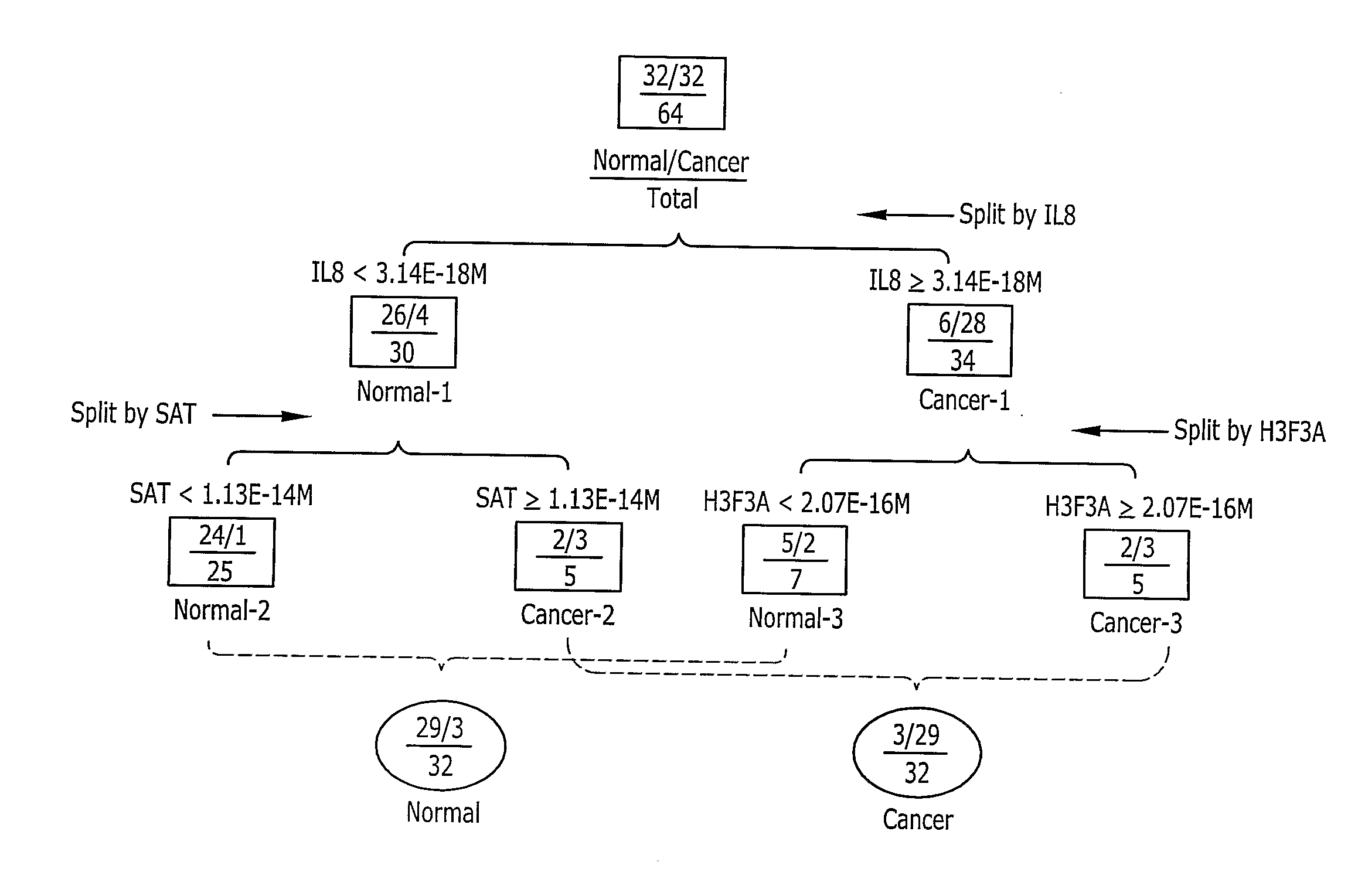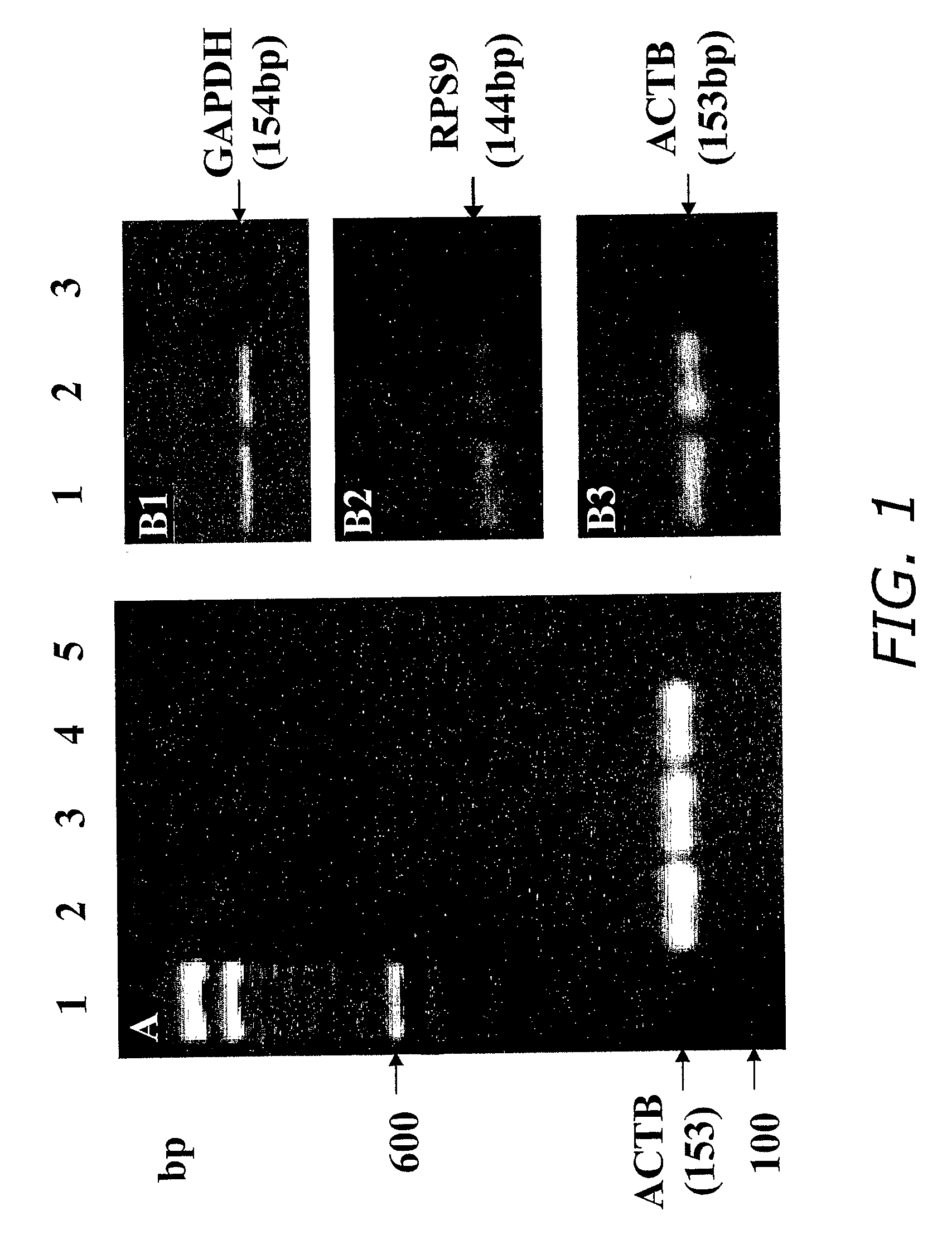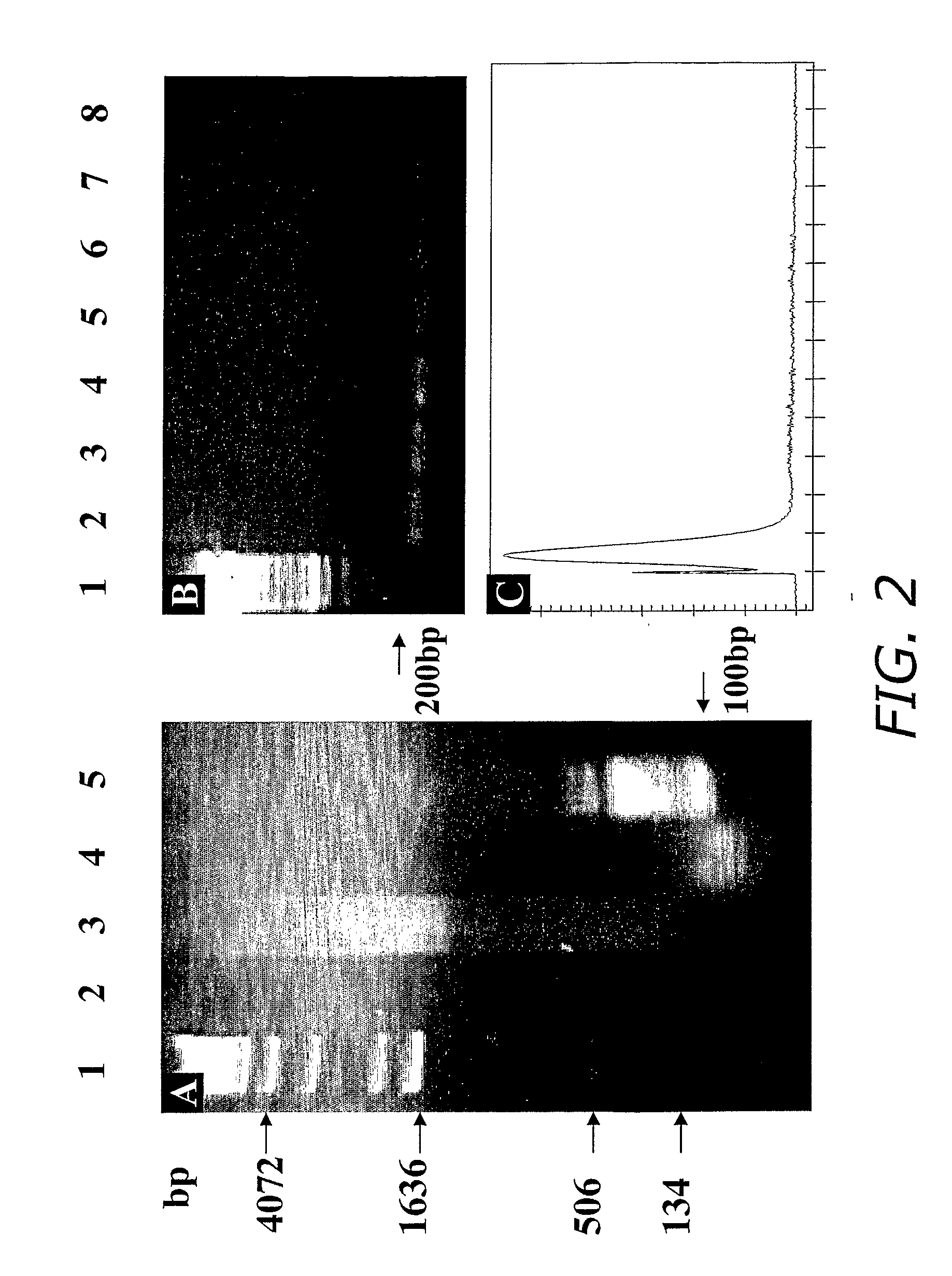Salivary Mrna Profiling, Biomarkers and Related Methods and Kits of Parts
a technology of salivary mrna and biomarkers, applied in the field of salivary mrna profiling, can solve the problems of a great public health problem for oral cavity and oropharynx cancer
- Summary
- Abstract
- Description
- Claims
- Application Information
AI Technical Summary
Benefits of technology
Problems solved by technology
Method used
Image
Examples
example 1
RNA Isolation, Amplification and Gene Expression Profiling from Cell-Free Saliva of Normal Donors
Normal Subjects
[0111]Saliva samples were obtained from ten normal donors from the Division of Otolaryngology, Head and Neck Surgery, at the Medical Center, University of California, Los Angeles (UCLA), CA, in accordance with a protocol approved by the UCLA Institutional Review Board. The following inclusion criteria were used: age 30 years; no history of malignancy, immunodeficiency, autoimmune disorders, hepatitis, HIV infection or smoking. The study population was composed of 6 males and 4 females, with an average age of 42 years (range from 32 to 55 years).
Saliva Collection and Processing to Obtain the Relevant Fluid Phase
[0112]Unstimulated saliva were collected between 9 am and 10 am in accordance with published protocols [38]. Subjects were asked to refrain from eating, drinking, smoking or oral hygiene procedures for at least one hour prior to saliva collection. Saliva samples were...
example 2
Microarray profiling of mRNA from cell-free saliva of Normal Donors
[0124]Saliva was collected processed and the RNA isolated as reported in Example 1. Also, stability, quality and quantity of the RNA was assessed are reported in Example 1.
HG-U1331A Microarray Analysis
[0125]The Affymetrix Human Genome U133A Array, which contains 22,215 human gene cDNA probe sets representing ˜19,000 genes (i.e., each gene may be represented by more than one probe sets), was applied for gene expression profiling. The array data were normalized and analyzed using Microarray Suite (MAS) software (Affymetrix). A detection p-value was obtained for each probe set. Any probe sets with p<0.04 was assigned “present”, indicating the matching gene transcript is reliably detected (Affymetrix, 2001). The total number of present probe sets on each array was obtained and the present percentage (P %) of present genes was calculated. Functional classification was performed on selected genes (present on all ten arrays...
example 3
Q-PCR Validation and Quantitation Analysis of Microarray Profiling from Cell-Free Saliva of Normal Donors
[0128]The Microarray analysis performed in Example 2 was validated through a quantitative gene expression analysis by Q-PCR
Quantitative Gene Expression Analysis by Q-PCR
[0129]Real time quantitative PCR (Q-PCR) was used to validate the presence of human mRNA in saliva by quantifying selected genes from the 185 “Normal Salivary Core Transcriptome” genes detected by the Microarray profiling reported in Example 2. Genes IL1B, SFN and K-ALPHA-1, which were assigned present calls on all 10 arrays, were randomly selected for validation.
[0130]Q-PCR was performed using iCycler™ thermal Cycler (Bio-Rad, Hercules, Calif., USA). A 2 μL aliquot of the isolated salivary RNA (without amplification) was reverse transcribed into cDNA using MuLV Reverse Transcriptase (Applied Biosystems, Foster City, Calif., USA). The resulting cDNA (3 μL) was used for PCR amplification using iQ SYBR Green Supermi...
PUM
| Property | Measurement | Unit |
|---|---|---|
| Volume | aaaaa | aaaaa |
| Fraction | aaaaa | aaaaa |
| Fraction | aaaaa | aaaaa |
Abstract
Description
Claims
Application Information
 Login to View More
Login to View More - R&D
- Intellectual Property
- Life Sciences
- Materials
- Tech Scout
- Unparalleled Data Quality
- Higher Quality Content
- 60% Fewer Hallucinations
Browse by: Latest US Patents, China's latest patents, Technical Efficacy Thesaurus, Application Domain, Technology Topic, Popular Technical Reports.
© 2025 PatSnap. All rights reserved.Legal|Privacy policy|Modern Slavery Act Transparency Statement|Sitemap|About US| Contact US: help@patsnap.com



